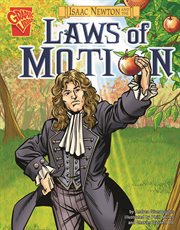Sir Isaac Newton, an English scientist born in 1642, discovered three important principles of physics that describe how things move. Consequently, the principles bear his name, Newton’s First, Second, and Third Laws of Motion. Today’s experiment demonstrates Newton’s Third Law of Motion. It says that for every action there is an equal and opposite re-action. Basically, if an object is pushed, that object will push back in the opposite direction, equally hard.
Websites, Activities & Printables
- Groovy Lab in a Box: 4 Groovy Ways to Teach Newton’s Third Law
- Lego Challenge: Newton’s Third Law
- NASA: Newton’s Third Law of Motion
- IndyPL Blog: Newton’s First Law of Motion
- IndyPL Blog: Newton’s Second Law of Motion

You can ask a math and science expert for homework help by calling the Ask Rose Homework Hotline. They provide FREE math and science homework help to Indiana students in grades 6-12.
e-Books and Audiobooks
Use your indyPL Library Card to check out books about Sir Isaac Newton at any of our locations, or check out Sir Isaac Newton e-books and audiobooks from OverDrive Kids right to your device! If you have never used OverDrive before, you can learn how to use e-books and learn how to use audiobooks.
Need more help? Ask a Library staff member at any of our locations or call, text or email Ask-a-Librarian. Additionally, the Tinker Station helpline at (317) 275-4500 is also available. It is staffed by device experts who can answer questions about how to read, watch and listen on a PC, tablet or phone.
Newton’s Laws of Motion: The Science Behind How Things Move
Newton’s Laws of Motion explain force and motion, or why things move the way they do. They are great concepts to explore by doing a science experiment. These are especially good science project ideas for kids who like to move! The concepts can often be explained using sports equipment or by understanding how amusement park rides work. These books offer ideas for physics experiments that demonstrate force and motion and the laws that govern them. Some of them provide the background information needed for the report that is often required to go with projects for the science fair.

